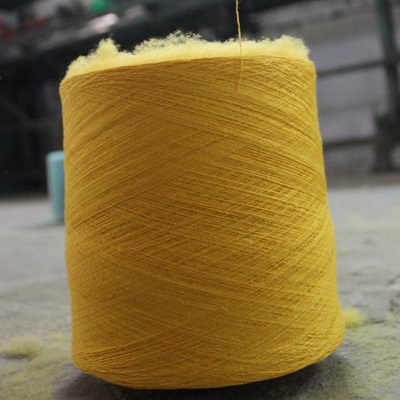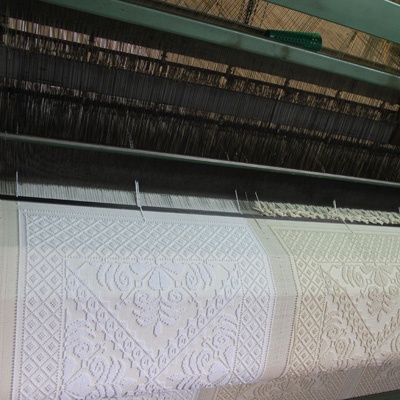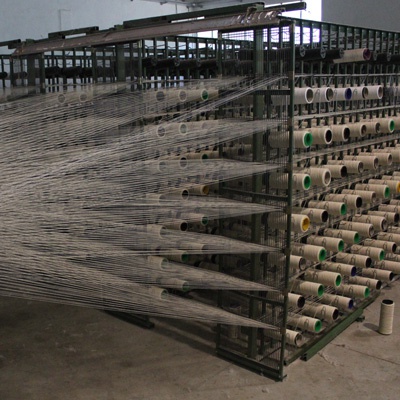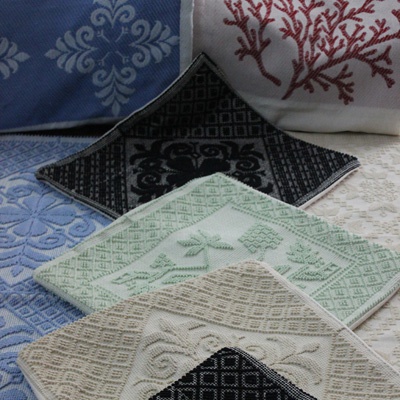




Over the centuries, besides farming and agriculture, the family weaving was among the main productive activities of Sardinia, and was widespead throughout the island.
Nineteenth-century sources document a deep-rooted and widespread production. According to a 1886 census, 19,336 looms were in use throughout the island.
It is documented that weiving exists in Sardinia from before the Romans. In Sardinian Archaeological Museums are exposed loom pieces and artifacts that date back to the Copper Age (4100 - 4000 a.c.).
Typically, in addition to personal clothing, the Sardinian woman wove "copricasse" or blankets for the beds - improperly called rugs -, saddle-bags, rich collars for the festive trappings of horses and oxen (some Nuraghic bronze depicts oxes or bulls with the big collar oround their neck).
The rich chromatic and compositional harmony differred from town to town, same as the way one placed the geometric mirror pairs stylized forms of birds, animals, flowers. Still today ancient fabric patterns, transmitted from mother to daughter, who reproduce them perfectionating them with successive imperceptible contributions.
The main raw material used in weaving, is sheep wool. The vegetable textile fibers come flax, hemp and cotton. A special case is constituted by the weaving of silk and of fine marine linen. Until the early twentieth century the yarns colouring was made by using the dyeing properties of local plants. Although in the mid-nineteenth century was introduced also the use of aniline dyes, they did not supplante the traditional dyes, used to date mainly to get different shades of yellow, maroon, brown and red.
With the exception of the annual shearing all stages of wool processing (washing, drying, carding, etc) were of female competence who also took care of carding and spinning of flax and hemp grown in the Island, and bleach or colour the yarns. Cotton fiber, also widely used in traditional weaving, is rarely produced on site.
Since the early decades of the '50s of the twentieth century, the trousseau of a bride consisted of fabric products of the highest quality and workmanship.
Today, the high quality of the products and the typical Italian design, make the textile industry of the Island famous far beyond the Italian borders.
During this excursion you will have the chance to visit a family managed textile factory, where you can watch the process leading to the creation of masterpieces, such as bedspreads, sheets, bags, curtains and tablecloths, all handmade, in cotton or linen, white or colored, and you will have the opportunity to keep with you a little piece of Sardinia!
The Murals of Sardinia
Driving through the quiet and charming villages of the island, you will notice that often the colorful facades of the houses are decorated with MURALES.
The murals are an expression of a huge school of outdoor pictorial experimentation that constantly change over time: the most beautiful are updated, integrated and restored, others left peacefully grow old ... or replaced by new ones.
They where generated in Orgosolo by the social and political passion of the years 60 and 70, involving much of the towns inabitants and leaving their mark on the walls of the houses and on the rocks around. The figures are strong, dramatic, refer to the ancient wounds, the life of the shepherds, the misery, the struggles for land, the protests and the wishes of the community in which the colonialist State never gave solutions.
When finally the social tensions of the 70s and 80s have faded, somewhat politically motivated paintings have turned into decorative scenes, depicting the everyday life: men and horses, shepherds, mothers with their children.
As you will see, in the different fa?ades are shown different storys of everyday life, with subjects ranging from religious scenes to scenes of Sardinian carnival, from herding and sheep shearing, to harvest and wine making. And in some of them the characters represented are so real that what you see are images and nor real people.
This trip will live long in the memory and we're sure you'll want to return to these places.
The duration dell`escursione e`di half day (up to 4 hours)